In one of the two forewords to the newly published Coastal Atlas of Ireland, Prof Colin Woodroffe, chairman of the International Geographical Union Coastal Systems Commission, describes Ireland as "the quintessential island". The Atlas, he writes, "offers opportunity to explore 'this paradise on Earth' and to see that the often cold and grey spaces of the Irish coast contain an astonishing mix of wonder, mystery and charm".
Graham Norton, in his endorsement of the atlas, says the book is "the definitive examination of Ireland's unique relationship to the sea. A rare combination of the historical and the natural, the book is as comprehensive as it is beautiful and accessible."
This ambitious project grew from conversations and ideas first discussed by me and Dr Maxim Kozachenko (a former lecturer in the geography department at University College Cork) in the Coastal and Marine Resources Centre at UCC in 2014.
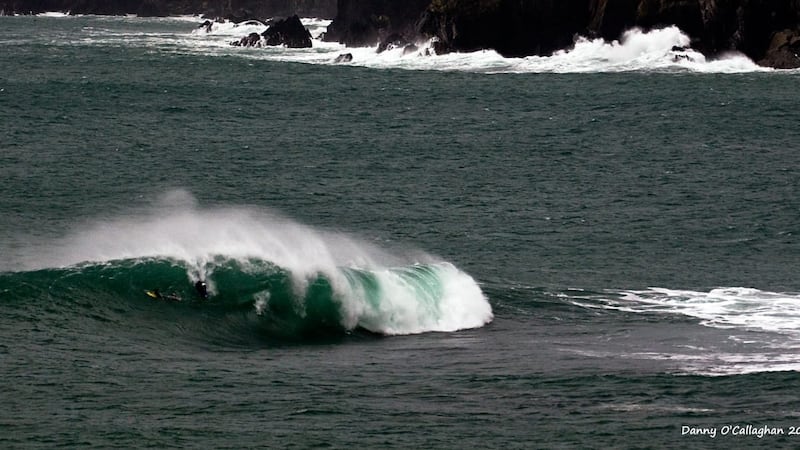
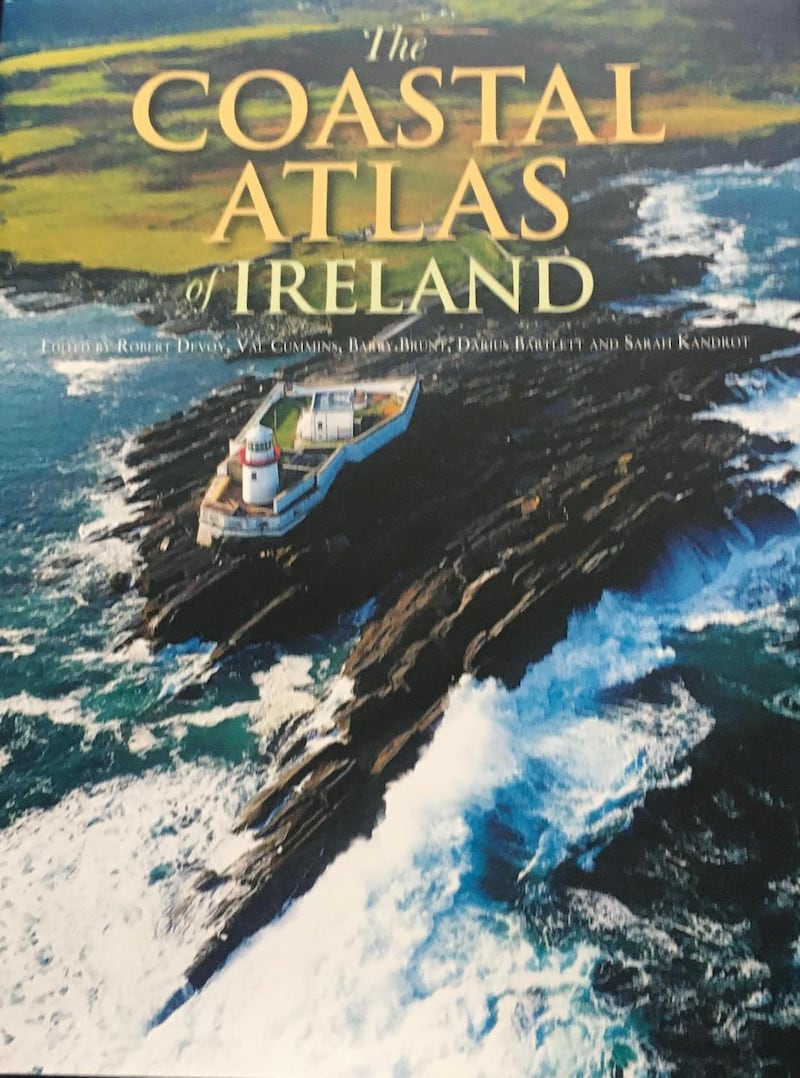
Kozachenko, as a chapter contributor, went on to develop primarily interview and online video support material (as shown in web links in the printed atlas). The outline design for the structure and layout of the atlas took shape quickly and work began, with Val Cummins (operation and Ireland projects director at Simply Blue Group) joining the project early on. A team of five editors (Robert Devoy, Val Cummins, Barry Brunt, Darius Bartlett and Sarah Kandrot) and supporting staff (Zoë O’Hanlon and Kyle Fawkes) grew over the next three years.
Their work drew together the core writing of the editors, together with that of eventually 149 contributors to the project. These contributors were recruited from many different areas of expertise within Ireland, covering diverse subject fields including geography, history, archaeology, economics, architecture, plant science, marine biology, ecology and engineering, together with many others.
The result is a book of 893 pages of informed thematic text, maps, photographs and other graphics. These materials, structured into 33 chapters and grouped within six sections, have been written for the general reader to explore and discover the coast; through the main chapter themes as well as in individual case studies, boxes and other short, vignette-type pieces that draw out something striking or unique. The Atlas covers most aspects of Ireland’s coasts and offshore zones, from this multidisciplinary background of writers.
It expands on themes about Ireland’s past, present and future based on its coastal significance on Europe’s Atlantic margin. The work is huge and at 4.5kg, its weight has attracted already, as you might expect, humorous comment and some stubbed toes.
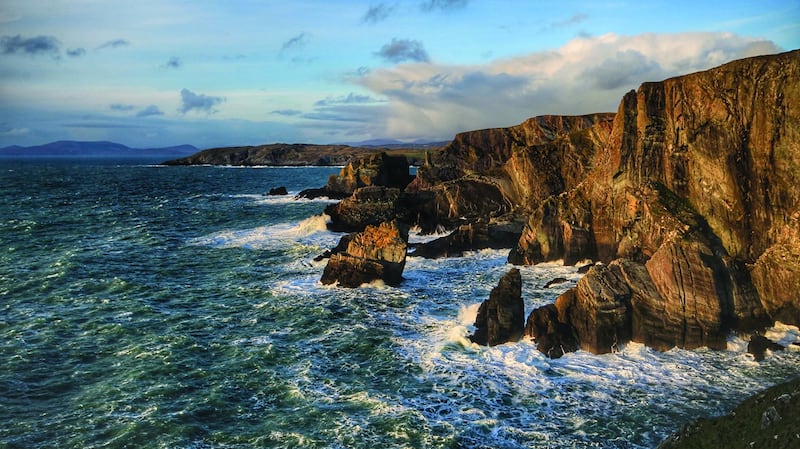
It can best be described as a work of geography. Not only because it integrates a multiplicity of information, in true geographical polymath style, which encapsulate Ireland’s coastal and offshore environments together; but foremost, because the Atlas is a work about Ireland’s coastal peoples, landscapes, places, patterns, spaces and events in time.
Unlike the attachment of many global-scale subjects to unique figures, such as Jacques Cousteau in Oceanography or David Attenborough with Life on Earth, no single character can be associated with Ireland's coasts. It would be invidious to try to do so, there are so many, though the atlas does tell the stories of some key figures through maritime traditions and institutions.
Regrettably, the events of history and society, in particular from the 19th century until recent times, have pushed the sea and the island’s coasts to a back-room location in the mindset of many people. As has now become widely recognised, not least by governments since the 1970s, this has been regrettable and a waste of a place of potentially immense resources. For example, for leisure pursuits and tourism or for energy production from wind and wave power sources.
In reality, the sea and coasts have been places where numerous individuals have given the coastal zone its visually distinctive, historically vibrant and spatially diverse qualities. The story of Ireland’s coastal environments continues to be told in a different way to areas inland. Many of the people involved have come from the families of fisher-farmers or, more commonly today as sea fishing continues to change in its national to local significance, from primarily farmers; people in aquaculture, tourism and the increasingly important commuting industrial city workers, from places such as Dublin, Galway, Belfast or Cork.
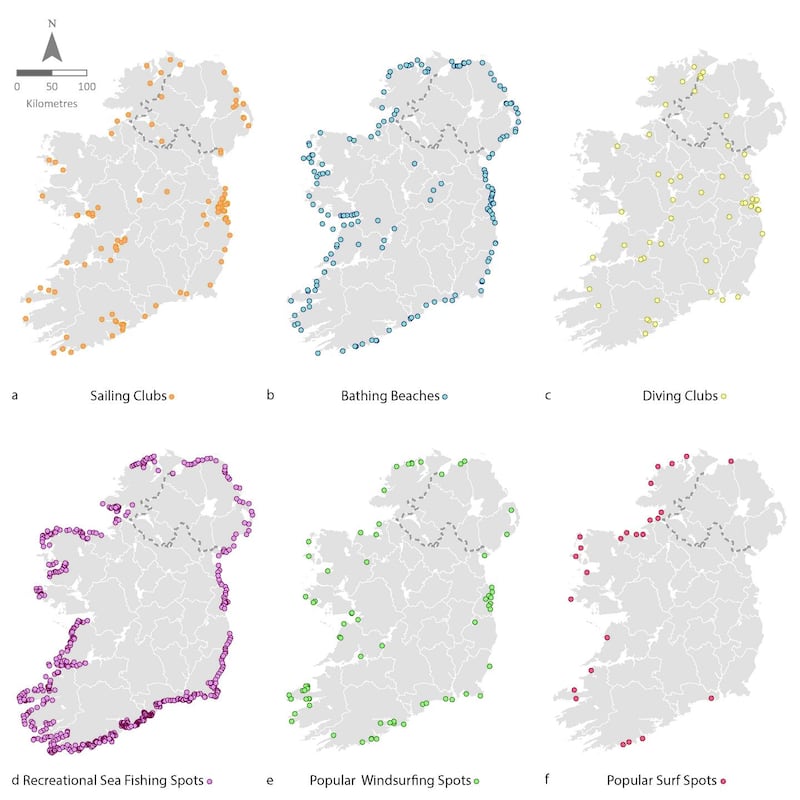

In past times, the lives of the fisher-farming coastal dwellers have developed what is seen as the extensive landscapes of rural coastal Ireland. This is expressed most significantly in the neat and regular field systems, bounded by the dry-stone walls of Ireland's western coasts and islands, or more commonly of the hedges and ditches found elsewhere on the island. These field patterns are attached to the farms and clustered settlements, of former clachans, which are spread across these rolling field-dominated landscapes, with their seasonal grey-green-brown-hued vegetation, or as nestled into the folds of the island's upland rim of rocks. These lands tell the story of Ireland's changing patterns of occupation and colonisation, from woodland clearances of the Neolithic and the first farming communities, through to later times of port and urban developments, such as those of Dublin, Derry, Waterford, Dundalk, Drogheda and Cork.
All these aspects of coasts have been explored in the atlas. As Bruce Thom wrote in a recent review for the Australian Geographer, “In going through each chapter, so much catches the eye. One can dive deeply into details including links to references, or skim over sections and become absorbed in specific stories.” The following scattered selection of brief thoughts on just a few topics serves to illustrate the scale and thematic variety of the Atlas.
Lisbon earthquake
From the world of physical geography and Earth processes, the topic of tsunami impact on Ireland is presented thematically and recurs often within the book. The Lisbon earthquake in 1755 and the consequent Atlantic Ocean tsunami is perhaps a surprising subject to highlight here, given Ireland’s distance from Portugal. Yet, the impact of this event on the coastal regions of south and southwest Ireland was profound, with consequences for coastal processes and functioning that are still visible, in significantly changed coastal shapes and cliff development.
The effects of this Lisbon event were recorded in historical sources and also physically in sand beaches and rock systems, from Cork Harbour to Clear Island, Co Kerry. While no life is known to have been lost, coastal settlements are likely to have been affected and even washed away. What is most significant for us today about the event is not so much that a similar tsunami could happen again, but more about learning what those living in coastal spaces should do to reduce their vulnerability from such potentially catastrophic events, including from similarly scaled and more frequent occurrence of storm waves and longer-term rises of sea levels.
In a section on People and the Coast come the histories of invasion, or threat of invasion, and of colonisation of the island, together with the activities of smuggling and piracy. The arrival of the Vikings from Scandinavia from the ninth century onwards, firstly through coastal raids and later settlements on the coast, such as those of Limerick, Larne and Waterford. These raids heralded significant changes in land occupation, social patterns, place names and, perhaps most importantly for today, the founding of the major cities of Dublin and Cork, among others.
For early Christian church and monastic foundations, such as that on Rathlin Island, Co Antrim, or of St Senan on Scattery Island in the Shannon, St Finbarre’s and St Molaga’s church settlements in Cork, the Vikings were a real threat to life.
Later invasions by the Normans, notably from the landings in Wexford at Bannow (1169 AD) and Baginbun (1170 AD), and the later times of colonisation, with the English plantations of settlers, all began at and affected the coastal lands.
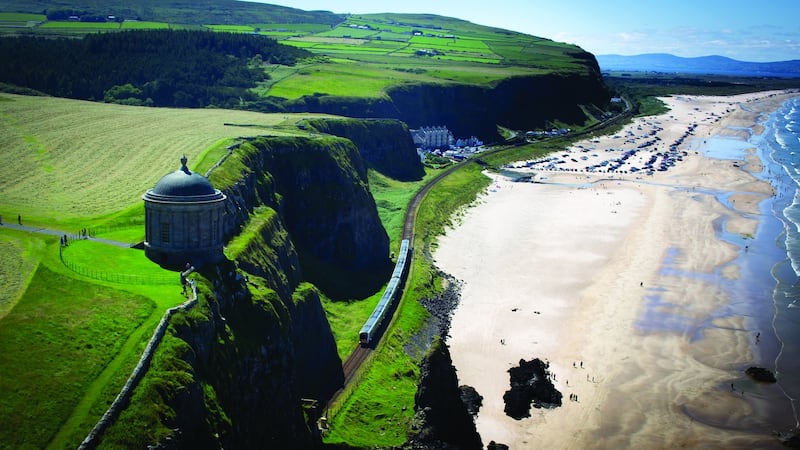
Curiously, the story of the Spanish Armada (1588-1589 AD), which never posed real threat of invasion to Ireland, has captured the imagination of scholars and underwater archaeologists. The long-remembered stories of sunken Spanish Armada ships abound. Only six shipwrecks from the defeated Armada have been investigated along Ireland’s seaboard, though some 12 others are known about in Irish territorial waters.
Of the sailors from the Armada that survived the wrecks and remained in Ireland, their presence in the population has served to reinforce the long-established cultural influences of the Iberian Mediterranean peoples in western Ireland, which probably link back into Neolithic times.
The Great Famine (1845-1851), and subsequent famines from the 1850s and 1860s, was a black time for the island’s coastal inhabitants: a time of hunger and a desperate searching for food along shorelines, as around Dingle Bay and Sligo Bay; of death and hasty graveyards; of the displacement of people to find paid work, as happened from Mayo to Kerry; of emigration and the setting of a pattern into the present day of the abandonment of coastal settlements and dwellings. The atlas devotes a chapter to examining the issues and impacts of this time on coastal Ireland and makes the link to the earlier Atlas of The Great Irish Famine.
Aquaculture
Today, for numerous coasts around Ireland, from Strangford and Carlingford Loughs, Co Down, to the indented deep-water coasts of counties Donegal, Mayo and Kerry, to Bantry Bay, Co Cork, aquaculture (of primarily mussels, oysters and salmon as part of the wider fisheries industry) has brought businesses and employment, new technologies and communications, as well as hope, into the setting of widespread declines in rural coastal populations.
Many problems exist, though, in the development of this growing industry (valued in 2016 at €177 million). They include disease and pollution threats to both the environment and to the fisheries’ stocks, complaints from other coastal users of the perceived intrusive nature of the activities, overstocking, increased jellyfish attacks with climate warming and calls for better coastal management and marine spatial planning. A chapter is given to discussion of this theme and the future of this growing industry.
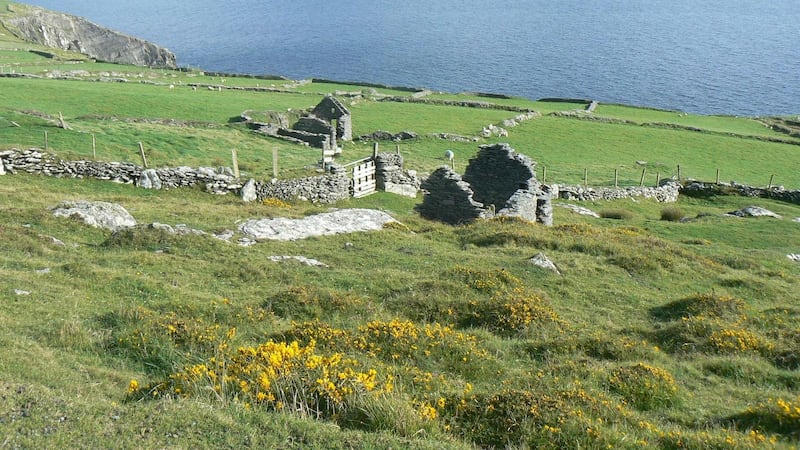
Ireland has potentially abundant offshore and coastal wind, wave and tidal power resources. It has internationally significant and long-established research capabilities in the development of technologies, engineering and management of resources, including the Lir National Ocean Test Facility, in MaREI at UCC, and the Atlantic Marine Energy Test Site at Belmullet, Co Mayo. In the face of growing fears of fuel shortages and power cuts this winter, following the effects of Covid, Brexit and of transitional changes from long-term energy planning for use of renewable energy, the development of Ireland’s offshore energy resources has become a priority.
The National Energy and Climate Plan 2021-2030 has an integrated approach to the need for decarbonisation and adaptation, and within the plan ocean energy use figures strongly. Lots of new businesses, many based in coastal settings, have started up since 2010 to help capture these resources and bring further employment to coastal areas. To date though, the development of the offshore wind turbine industry has been slow, with the pioneer Arklow Bank Wind Farm in the Irish Sea being the only significant operational site. It’s all to play for in this potentially game-changing industry.
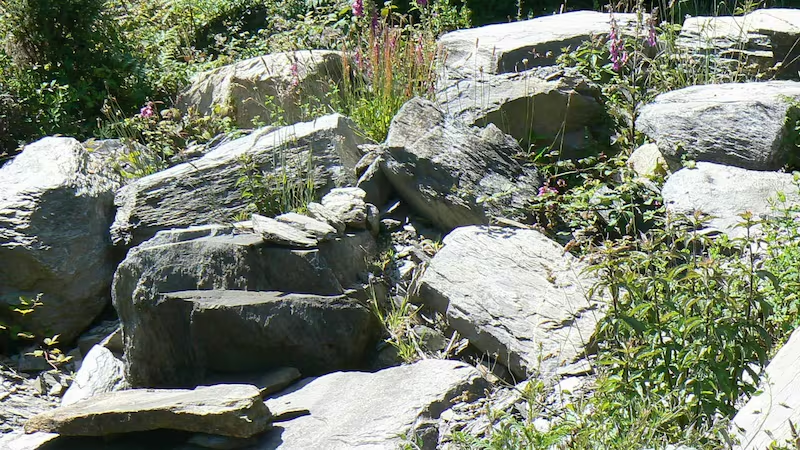
A core aim of the atlas is to help inform future generations about our coasts. With that in mind, a digital preview of the printed atlas has been developed, called StoryMap. This provides images and text from the atlas, together with some interactive mapping. It is planned that the StoryMap will also develop as a platform for databases for coastal information, to serve particularly as a basis for schools and project work in future.
The atlas forms the fifth in the internationally acclaimed series of atlases under the banner of Cork University Press, which began in UCC in 2005 with the Atlas of Cork City.
The Coastal Atlas of Ireland is published by Cork University Press. Robert Devoy is lead editor












